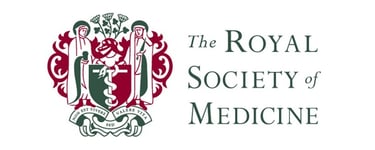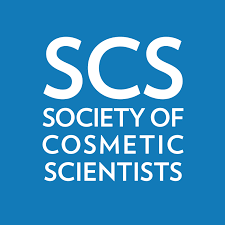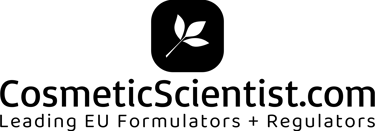Skin Care Base Cosmetic Formulas
At Cosmetic Scientist, we empower our customers with a variety of Skin Care Base formulations crafted by expert cosmetic scientists, allowing them the freedom to create their own unique formulations. Each formula is accompanied by detailed information on where to source the necessary raw materials within the UK, ensuring a seamless procurement process. Additionally, we provide clear, step-by-step instructions on how to transform these base formulas into finished products. To further support our customers, we offer a complimentary 30-minute consultation call to address any questions or provide guidance on the formulation process. Whether you're a seasoned formulator or just starting, we are here to assist you in bringing your cosmetic creations to life. Call to Book for an introduction call 0207 6327557.


Starting your own Skin care-based cosmetic formulation crafting journey can be both exciting and overwhelming, and using base cosmetic formulations is often the best option for newcomers. These formulations provide a solid foundation, allowing crafters to experiment with textures, scents, and colours without getting lost in the complexities of creating products from scratch. By beginning with established bases, you can focus on enhancing your creations with personal touches, like essential oils or natural extracts, helping to hone your skills while minimising the risk of unwanted reactions. Additionally, using base formulations helps maintain consistency in your products, which is essential when testing new ideas or sharing with friends and family. Ultimately, this approach not only simplifies the crafting process but also boosts confidence, encouraging enthusiasts to explore their creativity in the world of cosmetics.
Memberships




Formulating adult skin care products is a multifaceted process that requires a deep understanding of skin biology, chemistry, and consumer needs. Here's how cosmetic scientists typically approach the formulation of adult skin care products:
1. Understanding the Skin
Before even beginning the formulation process, the cosmetic scientist must have a comprehensive understanding of adult skin types and their needs. Adult skin can vary significantly based on factors such as age, gender, and environmental exposure. It may be oily, dry, or combination, and concerns may range from acne and sensitivity to signs of aging like wrinkles and pigmentation.
2. Identifying the Target Consumer
Understanding the target demographic is crucial. This includes age range, skin concerns, lifestyle, and preferences. Surveys and market research can provide insights into what consumers are looking for in a product, such as natural ingredients, cruelty-free formulations, or specific benefits like hydration or anti-aging.
3. Researching Ingredients
The next step involves extensive research into potential ingredients. Cosmetic scientists utilize a combination of scientific literature, ingredient databases, and supplier information to identify active ingredients that meet the desired efficacy and safety standards. Common categories of ingredients include:
- Emollients: These help to soften and soothe the skin and include oils and butters.
- Humectants: Ingredients like glycerin and hyaluronic acid draw moisture into the skin.
- Surfactants: Essential for cleansing formulations, they help remove dirt and oils.
- Active Ingredients: These target specific skin concerns (e.g., retinoids for aging, salicylic acid for acne).
4. Formulation Design
With a list of potential ingredients, the cosmetic scientist begins the actual formulation. Here, they must consider the product type (cream, lotion, serum, etc.), texture, absorbency, and overall feel on the skin. The pH level is also a critical factor, as varying pH levels can influence the performance of certain ingredients and the overall stability of the formulation. Here is a structured approach:
- Phase Separation: Formulations often involve separate oil and water phases which must be emulsified.
- Testing Concentrations: Determine the optimal concentrations of each ingredient to balance efficacy, safety, and sensory characteristics.
- Stability Considerations: Ensure that the product remains stable over its intended shelf life, accounting for temperature, light exposure, and potential interactions between ingredients.
5. Preliminary Testing
Once an initial formulation is developed, it undergoes preliminary testing. This stage includes:
- Stability Testing: Assess how the formulation holds up under varying temperatures and conditions.
- Microbial Testing: Check for microbial contamination, which is vital for skin safety.
- Compatibility Testing: Ensure the formulation won't react negatively with packaging materials.
6. Efficacy and Sensory Testing
To establish the effectiveness and feel of the product, cosmetic scientists may conduct:
- Clinical Trials: Testing on a small group of volunteers to track any improvements in skin conditions.
- Self-Evaluation Surveys: Participants can provide subjective feedback on how the product feels and performs after use.
- Dermatological Testing: Ensuring that the product is safe for use on different skin types and conditions.
7. Regulatory Compliance
All formulations must adhere to regulatory guidelines depending on the region they will be sold in. This may involve ensuring ingredients are safe for consumer use, labeling accurately, and considering any claims made about the product (e.g., hypoallergenic, non-comedogenic).
8. Finalizing the Formula
Based on the results from testing and feedback, the formulation may go through several iterations before being finalized. This step involves perfecting the texture, scent, color, and packaging design to align with consumer preferences and branding strategies.
9. Production and Quality Control
Once the formulation is final, the production process begins. This involves working closely with manufacturers to ensure the formulation is produced consistently at scale. Quality control measures must be in place to monitor the production of each batch, ensuring that they meet the established standards for safety and efficacy.
10. Marketing and Launch
After successful production, the product is ready for market launch. The cosmetic scientist collaborates with marketing teams to develop promotional strategies that highlight the unique benefits of the formulation. Educational content that outlines the key ingredients, their benefits, and how to use the product can also enhance consumer understanding and engagement.
Conclusion
The journey of formulating an adult skin care product is a systematic blend of art and science. From understanding consumer needs to rigorous testing and regulatory compliance, cosmetic scientists play a crucial role in bringing effective and safe products to market. Each stage is pivotal in ensuring that the final product not only meets consumer expectations but also promotes healthy skin care practices....
Address
Cosmetic Scientist C/O Harley St Cosmetic Ltd
85 Great Portalnd St, London W1W 7LT
Contacts
Contact@CosmeticScientist.com
Tel +44 0207 6327557
Subscribe to our newsletter
